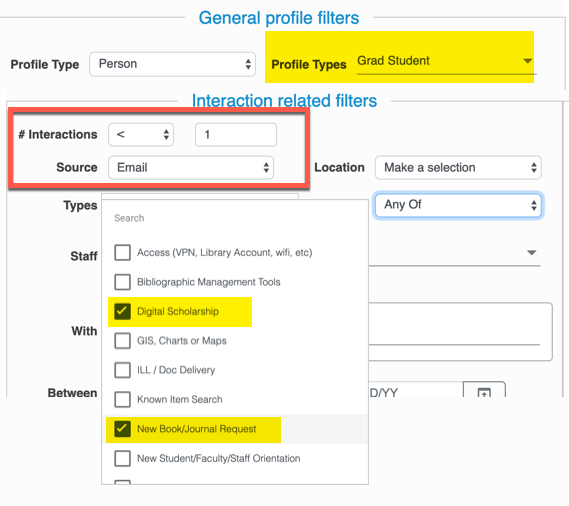Springshare had the pleasure of working with the awesome librarians at the University of California, San Diego, as beta-testing partners, of our newly released LibCRM Tool. In just a few short months, they’ve launched LibCRM with over 30,000 profiles imported. (wow!)
One of the best ways to learn about a tool is to see how other libraries are using it. To that end, we’ve interviewed Adele Barsh and Karen Heskett from UCSD to learn about their plans for LibCRM and what they hope to accomplish with it.
|
|
|
LibCRM to Improve Communication and Shared Information Between Librarians
By: Adele Barsh & Karen Heskett
We began wanting a CRM application as our library was going through a reorganization. We thought an application like LibCRM would improve our cross-team communications and allow us to take advantage of new report features that would help us evaluate and report out about our outreach programs and allow individual librarians to create meaningful activity reports on-demand.
We see a very obvious need for improving communications and shared information between our subject liaison librarians and others within the library who also are working with those very same faculty, staff, and students. For example, subject librarians will be able to see when format specialists worked with one of our faculty members (e.g., on data curation, digital collections, scholarly communication, or with our Data Librarian or our GIS Librarian), or interactions between other specialists at other service points, such as our Digital Media Lab and Special Collections.
Our first objective is to improve patron quality-of-service by communicating well with each other internally about specific patron needs; secondarily, we want to capture more statistics about what we do. We are excited about the potential for LibCRM to let us run reports showing data about how thoroughly we are reaching our end users across many disciplines, for example, instead of relying solely on our anecdotal knowledge and bare bones statistics.
We’ve been a beta tester of LibCRM, and still are fine-tuning our set up. We plan for a roll out to our subject specialist librarians, format specialists and selected service point professional staff, followed by checking in with other librarians and staff members who are more peripherally-engaged in public services, to see their level of interest or if they come up with new ideas on how LibCRM could help them meet their service goals.
Karen adds (and Adele agrees!): One specific thing I am looking forward to using is the LibCRM BCC email option. As someone who does a significant amount of work via email, having an easy way to capture that as a data point is very attractive for me. Additionally, in keeping with our desire for better internal communication and as my activities become increasingly interdisciplinary, this allows me to keep others informed about these cross-disciplinary communications.

LibCRM to Aid in Pattern-Recognition and Metrics
We want to gather more statistics about individual transactions than we presently do, and we’re hoping there are enough useful features to the end-user librarian to entice them into becoming regular users.
We also want to see if there are larger patterns within the interaction that we haven’t noticed before, such as gaps of outreach to specific disciplines, or testing targeted outreach for what effect that has on subsequent engagement with a broader range of library services.

Projects & Task Management Area Considered Experimental… For Now. 😉
We’re feeling experimental so far about the projects and tasks areas. We think they might be great for tagging follow up needs (e.g., a subject librarian uncovers a scholarly communications or data curation need, or vice versa, and wants to alert the other librarian).
We’re initiating small group testing with a goal of introducing the features, and then seeing what ideas our librarians and professional staff come up with. We love “process” here, so we think some exciting applications can emerge.




